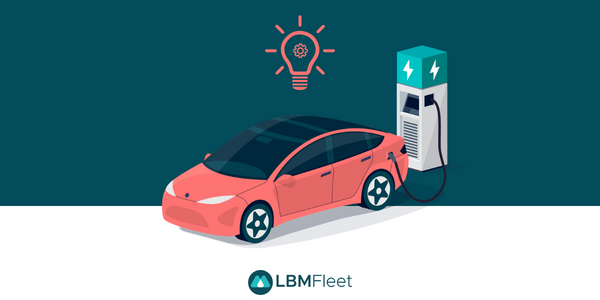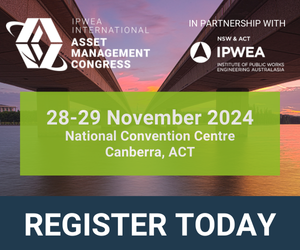The quick read – what you need to know
- The transition to electric vehicles isn’t a linear process. There are many considerations we need to consider first.
- EVs are a big part of the solution, but they aren’t the only thing that needs to change.
- If fleets aren’t optimised before transitioning to EVs, you may be causing more harm in CO2 emissions.
- Production carbon and the full life cycle of electric vehicles needs to be a consideration.
Within a decade, Electric Vehicles (EVs) will undoubtedly reign supreme on our roads and all organisations with a fleet will soon be faced with the daunting transition to EV. For many, their fleets are a day-to-day integral part of their operations and there is a fundamental need for mobility whilst reconciling broader goals of reducing emissions.
The transition roadmap isn’t linear, however. There are many considerations and variables to review before we jump into buying new cars.
So how do we get from point A to point B in a smooth, orderly, cost effective and sustainable manner? LBM takes a practical, data-driven approach to ensure success in your transition.
But First, Let’s Consider the Bigger Picture
One of the keys to preserving our planet for a better future is by reducing our emissions. In Australia alone, transport is one of the largest contributors to carbon emissions.
Reducing our emissions has a positive impact on the environment, improves public health and preserves resources for future generations, proving the need to be more sustainable. Becoming more sustainable hasn’t always been on our agenda. With majority of our current infrastructure currently aligned to our use of internal combustion engine (ICE) vehicles, there are many factors that need to be addressed.
The Current State of Play
Currently, mandates are coming into place, forcing many organisations into a transition they aren’t prepared for. Boards and managers are establishing sustainability goals that are filtering down to fleet departments with the important objective to reduce emissions.
While fleets are a vital part of many organisations operational needs and with only 3.39% of all new car sales in Australia being EVs, ICE vehicle emissions can have a major impact on these sustainability goals.
Many organisations are starting to look at EVs as the solution with some seeing a simple swap or replacement as the answer. This isn’t usually the best approach. EVs are a big part of the solution, but they aren’t the only thing that needs to change.
Our approach on the ground usually starts with questions to fleet managers, that they more often than not, can’t answer.
These include: How many cars do you really need? Who are your drivers and what do they need? What type of trips does your fleet do? What do they use your fleet for?
These unanswered questions reinforce the importance of our data-driven approach.

LBM’s Unique Approach – The ‘Needs Phase’
The Needs Phase assesses your actual operational needs of your fleet. This is often overlooked and not properly considered as part of the strategic process.
At LBM, we consider this the most important phase in the journey to EVs. This phase focuses on your operational needs and not the assets. We do this by collecting data from your vehicles to identify gaps in underutilised vehicles and patterns of use, to ultimately optimise your fleet.
By firstly assessing your needs phase with the right data, you have the opportunity to lower your CO2 emissions before purchasing electric vehicles. This is often done by reducing your fleet. Less vehicles, equals less emissions. By optimising and improving fleet efficiencies, fleet reduction opportunities can be created while still meeting your operational needs.
“We’ve nearly halved the size of our fleet since 2019 and have introduced electric vehicles with a plan to be 100 per cent electric (plug in hybrid or full electric) by 2023.”
BNZ Report
Addressing the Elephant in the Room – Production Carbon
Recently, Polestar, a competitive electric car brand, released data on the full life cycle of their vehicles, changing the way we think about EVs. Their data showed the number of kilometres their vehicles need to be driven to break-even on CO2 emissions compared to their ICE vehicle counterparts.
The numbers took into consideration several variables including what energy source is used to charge the vehicle. Essentially, the report shows EVs are initially less efficient mainly due to the production carbon in the vehicle battery. They do however catch up after a certain number of kilometres are driven. The speed of the catch up is significantly impacted by the energy source of the charging.
With this context and transparency around energy sources and how their vehicles will be charged, Polestar have uncovered the break-even points of their vehicles. The Polestar 2 Long range Dual motor with a global energy source for charging, needs to be driven 110,000kms to break-even on emissions. Where if the same vehicle is charged by a wind power source, the break-even point is less than half at 49,000kms.
| Electricity mix | Global | EU | Wind |
| Polestar 2 Long range Dual motor | 110 000 | 76 000 | 49 000 |
| Polestar 2 Long range Single motor | 86 000 | 65 000 | 49 000 |
| Polestar 2 Standard range Single motor | 79 000 | 58 000 | 40 000 |
Now, we’re all mostly aware of larger upfront emissions caused by the production of EVs, but the break-even points to becoming more sustainable is concerning with the current Australian mainland infrastructure in place.
A Strategic Approach to Transitioning – It Doesn’t End at Implementation
A strategic approach to transitioning large fleets to EVs is needed to ensure emissions are reduced over the long run and operational requirements are met. LBM’s strategic approach starts small and doesn’t end at implementation. Starting small allows for an implementation window where you can learn and evaluate before replacing your entire fleet. This gives rise to ongoing optimisation and prudent budget management. Policies and frameworks can also be established during this time, testing both driver and organisational compliance and uptake.
Once policies are in place and the targeted replacement EVs are being utilised, charged, and taken care of correctly, you can then evaluate your data again. You need to ensure your drivers are also ready to transition. A full organisational approach to transitioning everything in a short time frame will likely fail. Driver’s need the means to adapt and change how they drive, where they charge the vehicles and overall, understand how they work. Organisations need to identify and leverage early adopters to help with change management.
The answer is in the data. Being able to identify and interpret your organisation’s data is key.
Measure, Rethink and Implement Again
After evaluating your data, you have the opportunity to change your strategy. Between your initial small approach compared to what your data shows, there may be new vehicles on the market with longer range, or better infrastructure in place to charge, allowing you to transition more vehicles than intended. You may even have more drivers adopting EVs now who may also be able to input into policy updates and changes to ensure your entire organisation can transition easier.
Finally, always ensure you take advantage of all government incentives available to you.
How Do I Choose the Right EV for My Team – Charging and Range Requirements
Finding the right EV to suit your team and your operational needs isn’t easy. Our Fit for Purpose module qualifies appropriate vehicles based around your set requirements. It analyses various vehicles and looks at historical usage and identifies like-for-like vehicles which could be used to replace the vehicle to achieve improved sustainability outcomes. It also allows filtering by your preferred brand, making your next decision even easier.

Surveying your team is also an important part of the process. Not all your drivers will be early adopters. With good communication and making them apart of the decision-making process, they will feel less in the dark. Your survey should also measure their readiness for charging. This includes questions around their living situation and if they can charge at home or not.
CO2 and Fuel Reporting
Fuel and CO2 reporting requirements are already happening. At LBM, we have developed the reports you need to measure your fuel and CO2 emissions and track emissions reductions as your fleet size and composition changes.
Our emissions report also illustrates the difference between actual emissions vs. the manufacturer’s recommended emissions by vehicle which highlights a realistic picture on how the car is being driven and where there may be opportunity to improve.


In conclusion, if fleets aren’t optimised before transitioning to EVs, you may result in higher CO2 emissions and cost which is contrary to what we all acknowledge is needed.
Our expert team are already working with large government and enterprise fleets on their strategic transitions to ensure they are cost effective and efficient moving forward.
Contact the LBM team today to discuss your transition plan.














